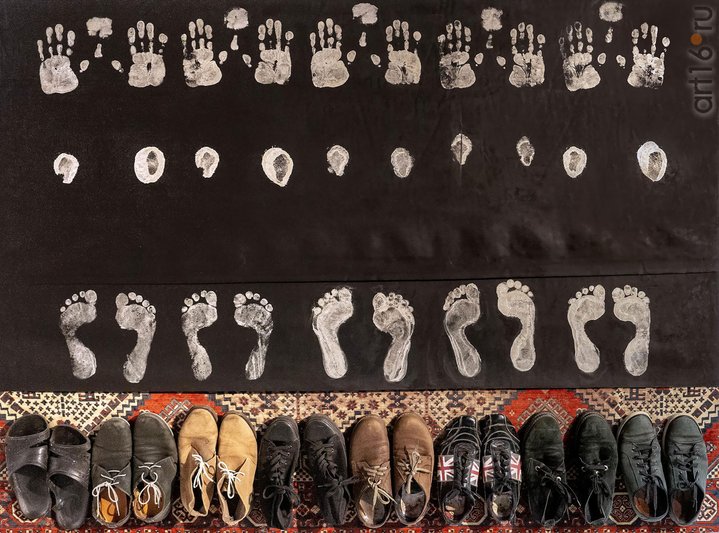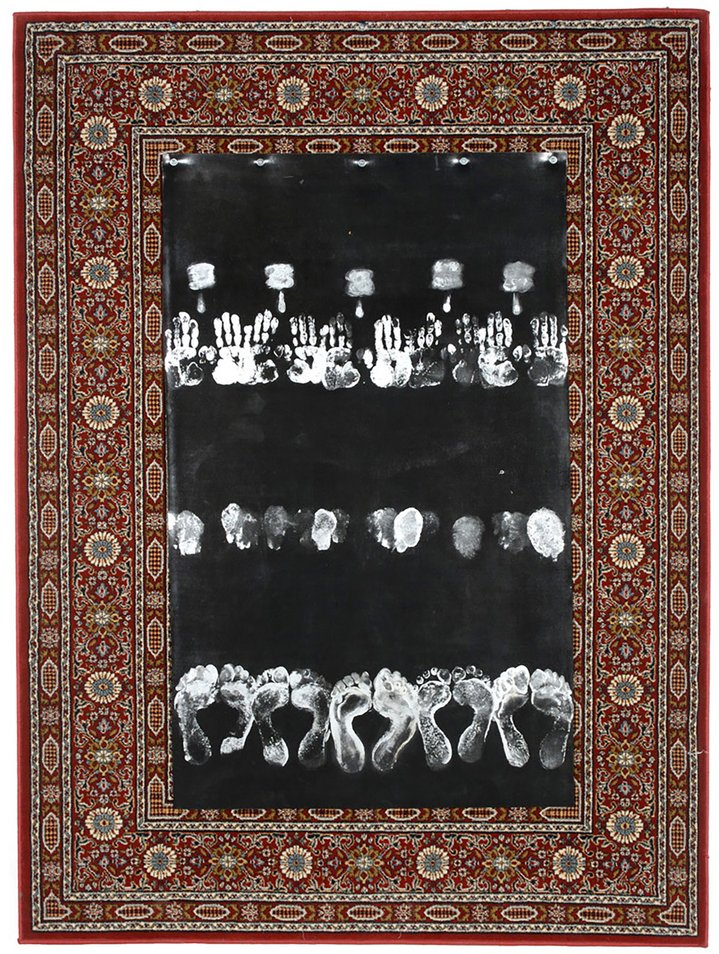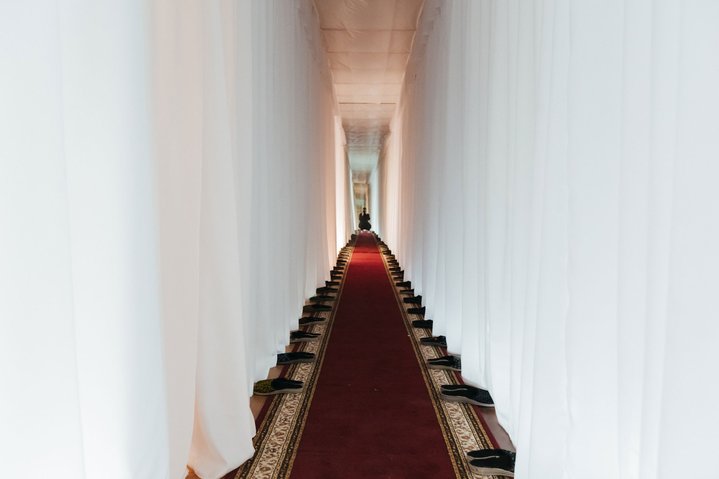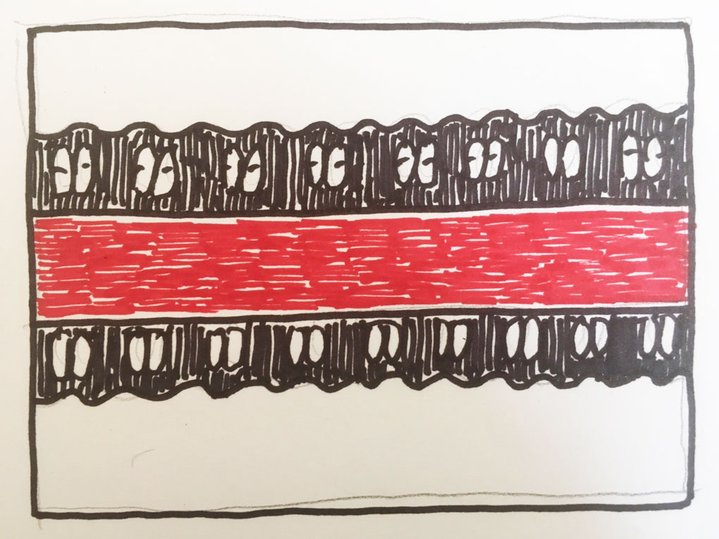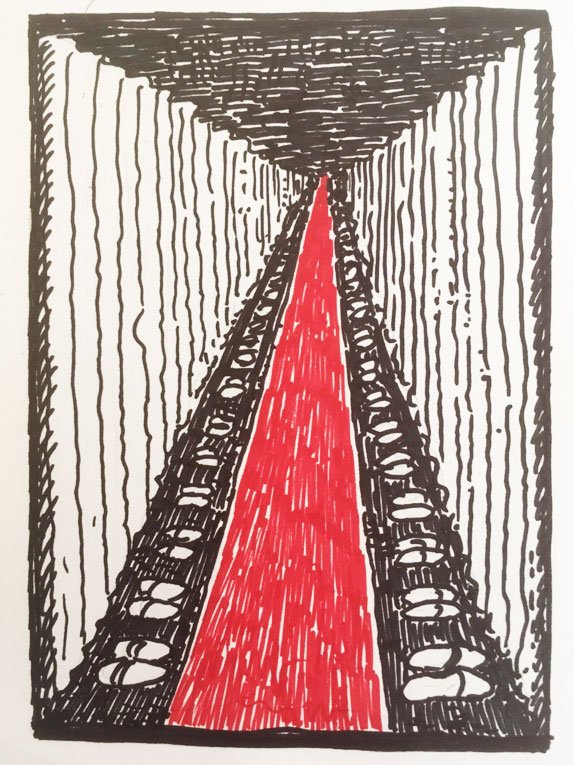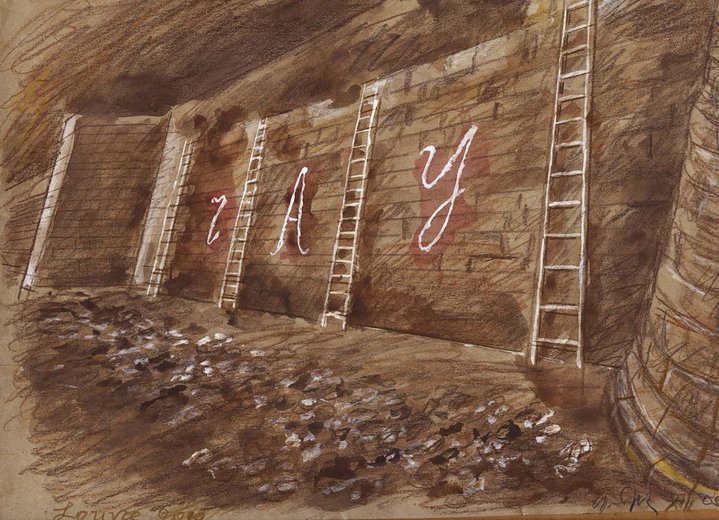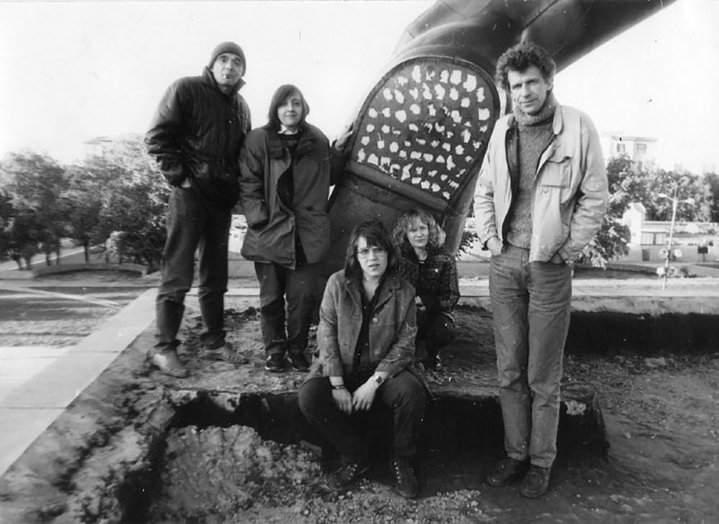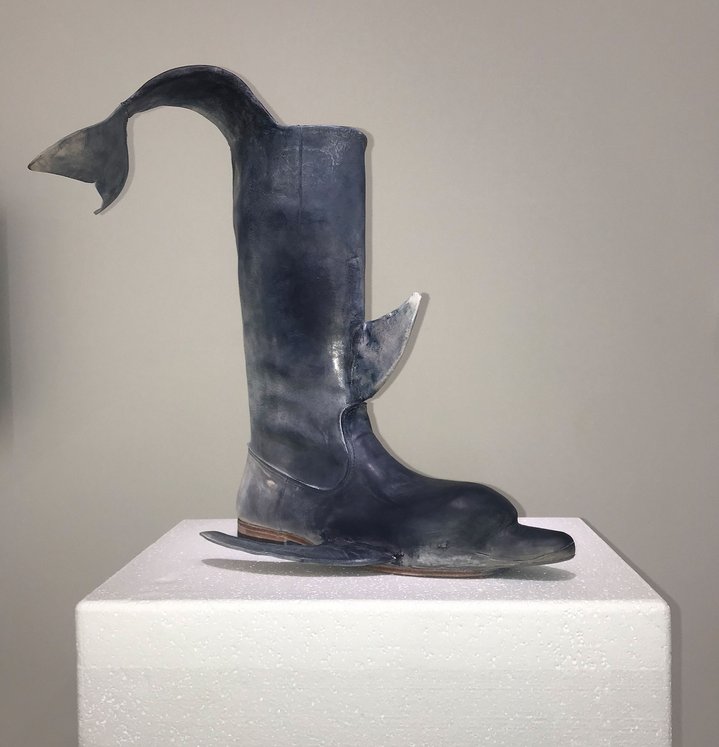The next shoe to drop

Turning used footwear into art is not an easy task. Yet, Russian artists of different generations have managed to discern new layers of meanings in all those old and shabby shoes and boots.
Aladdin Garunov
Born in Dagestan, a Southern Russian region with a predominantly Muslim population, Aladdin Garunov (b. 1956) does not shy away from addressing burning issues created by a multicultural world. He often uses unconventional materials, such as car tires, in his work. His project ‘Total Prayer’ is dedicated to the complicated relationship between Western culture and Islam. It alludes to the Muslim custom of taking your shoes off before prayer. The number of Muslims is growing in the Western world, the artist observes. “Due to a shortage of mosques, believers have flooded city streets, turning them into torrents of a total prayer. Here, clashes with other ethnic cultures become inevitable and can grow into open confrontations. The question is how we can arrive at mutual understanding, respect and love.” This project was shortlisted for the prestigious Kandinsky Prize in 2012.
Alexander Brodsky
The bold visions of artist and architect Alexander Brodsky (b. 1955) are more often realized on paper or in exhibition halls than on building sites. He was among the founders of the Utopian ‘Paper architecture’ movement in the 1980s and is known for conceptual installations with a nostalgic twist. His total installation ‘Red Carpet’ first shown in the basement of Moscow’s Triumph gallery in 2017, invites us to reflect on the idea of eternity, the Soviet past and to come face to face with our own reflection in the mirror when we least expect it. Visitors walk along a seemingly endless corridor with mirrors at both ends, enveloped by a vaguely eerie mood. Here, there is a clash of two worlds: one of cold and impersonal formality represented by the kind of red carpet, which was used in Soviet government offices and health centres, and the other of warmth and the home, symbolized by slippers, a staple in any Soviet or Russian apartment. These cosy slippers invite the guest to step behind the light, semi-transparent curtains, yet the mystery these curtains seem to hide is never solved – there’s nothing but a solid wall behind them.
Igor Makarevich and Elena Elagina
‘Unknown Reasoning Powers’, an installation by these veterans of Moscow Conceptualism was unveiled at ‘Counterpoint, Contemporary Russian Art’, an exhibition at the Louvre in 2010. The work alludes to the philosophy of Russian Cosmism and the writings of the visionary scientist Konstantin Tsiolkovsky, one of its best-known proponents. One day, he saw a cloud in the sky whose shape reminded him of three letters of the Latin alphabet, phonetically equivalent to the Russian word “rai” (“paradise”). Building on this vision of the sublime, Makarevich (b. 1943) and Elagina (b. 1949) add an earthly touch by placing on the floor over 100 pairs of used shoes and boots mostly donated by friends and art lovers. Their owners seem to have miraculously disappeared -- perhaps, they have climbed barefoot up the ladders into heaven? “Ladders have long been symbols of man’s ascent into the sky and entrance into another space or realm since biblical times,” the artists explain. “The piles of abandoned footwear are meant to raise doubts in the mind of the viewer -- is this the aftermath of a miracle or a tragedy?”
Collective actions
The most famous actions of the ‘Collective Actions’ group took place in an open field outside Moscow. Others were staged in the city itself. ‘The Heel’ (1990) was performed by German Slavist, art historian and artist Sabine Haensgen (b. 1955), artist Andrei Monastyrski (b. 1949) and writer Vladimir Sorokin (b. 1955) at VDNkH, a Soviet-era park and exhibition centre. There, the enormous stainless-steel statue ‘The Worker and the Kolkhoz Woman’ created by Soviet sculptor Vera Mukhina (1889–1953) for the 1937 International Exhibition in Paris had found its home. The three artists climbed up on the pedestal of the monument in the midst of Russian winter – not an easy task — carrying with them 70 cards depicting Chinese hieroglyphs. They glued the cards to the left heel of the Kolkhoz Woman’s boot. The idea of re-thinking Soviet symbols and monuments was then in tune with the times, as the Communist regime was then in its final days. Some fifteen years later, the gigantic sculpture was dismantled. It was re-assembled on a new, taller pedestal in 2009.
Dmitry Khvorostov
Artist and curator Dmitry Khvorostov (b. 1985) created a whimsical object called ‘The Fish Still-life’ as a part of the show ‘Closed Fish Exhibition. Reconstruction’ at Moscow’s Voznesensky Centre in 2020. Khvorostov co-curated it with young Moscow artist Yan Ginzburg (b. 1988). The exhibition was an homage to the well-known conceptual project by Igor Makarevich (b. 1943) and Elena Elagina (b. 1949) called ‘Closed Fish exhibition’ (1990), which was itself an homage to the mysterious 1935 exhibition in the seaside city of Astrakhan. Just a printed catalogue of that long-forgotten Soviet exhibition survived. It contained no images, yet the bizarre and obscure titles of works themselves ignited the artist couple’s imagination. Their total installation ‘Closed Fish Exhibition’ became a seminal work of Moscow Conceptualism and was re-constructed several times - most recently, at their solo show at the Moscow Museum of Modern Art in 2020. ‘The Fish Still-life’ alludes to the Surrealist side of Makarevich and Elagina’s oeuvre, as well as to works by the Swiss Surrealist Meret Oppenheim (1913–1985). The object, half-boot, half-dolphin, is complemented by documentary video footage where the artist buries a body of a young dolphin found at a beach on the Black Sea, while an elderly beach attendant tells him bizarre stories. One of them involves chrome-tanned boots “miraculously” obtained by the old man’s grandfather. According to the artist, the well-known fact that the dolphin is not a fish, but a mammal, gives an extra edge to the work’s surreal aura.






